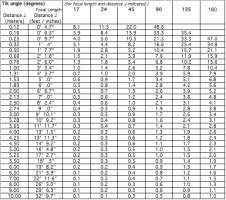SecureGSM said:
dafrank,
What is wrong with shooting head and shoulders portraits with 135mm lens?
Is the issue you are referring to is evident in the photo attached?

I never said anything was wrong with it. What I said was that there was a "rule of thumb" for 35mm film or "full frame" camera sensor cameras, and that there is one, is incontrovertible. For many decades - nearly a century, that rule of thumb was that portraits were best shot with lens focal lengths between about 80mm to 110mm, with 85mm, 90mm and 105mm lenses being the most recommended ones.
As for myself, I often shoot portraits with lens focal lengths up to about 180mm and sometimes, outdoors, even much longer. But, as is so often the case, rules are made to be broken and they are only best applied under certain circumstances.
After shooting thousands of professional portraits, I can give you some helpful information for you to use or discard as you wish.
When you shoot a person's head, their physical characteristics and lens focal length work together to make them look anywhere between good and odd.
For instance, when a person has even slightly bigger than usual ears, or if they "stick out" from the side of their heads a little more than average, lens focal length and posing angles become interconnected and determine whether the person can look their best or not. If that person with unfortunate ears (a very big portion of the population) poses with both ears at least somewhat visible, a lens longer than about 110mm starts to make that person look unfortunate. Their ear size begins to look really too big compared to the rest of their features. Even though this is a sort of an illusion, as their ears really are close to that size compared to their other features, nonetheless they still appear way less than their best. This is easily explained by perspective. Using a "too short" lens for this angle of view causes the foreground to appear bigger than the background - the simple understanding of the effects of perspective dictated by distance from the subject. In such a case, the person's close features, primarily the nose, will look way too prominent, but the ears, being in the "background" will shrink in apparent size compared to the rest of the features of the person's head. The rule-of-thumb focal length ranges, being longer, but not excessively so, will more equalize the ear to nose size relationship, while longer focal length lenses will, by even more equalizing that size relationship, make those with more prominent ears look bad. However, if you picture a person's face much more to the profile, or if their hair covers their ears, or if they have smaller and closer set ears, or you keep their ears in very dark shadow, one may use much longer focal length lenses without fear of making the subject's features look in any way disproportionate.
There is wisdom in the "rule of thumb", but one must also understand its purpose and when best to apply it to your particular situation. I hope this clears things up for you.

